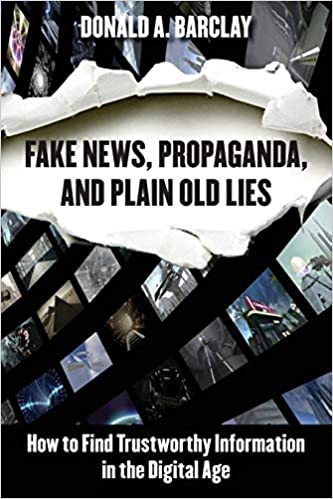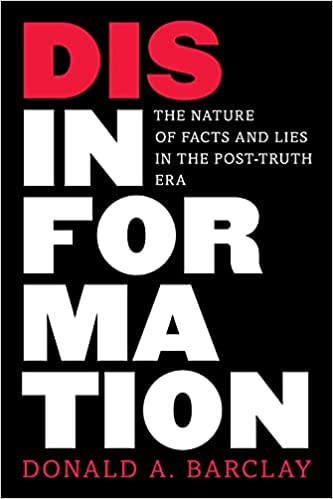Nicolette Lecy, Graduate Student Researcher
Deputy University Librarian Donald Barclay gave our first and only in-person seminar talk of the spring 2022 semester on the 4th chapter of his most recent book, Disinformation: The Nature of Facts and Lies in the Post-Truth Era. This book followed his earlier book Fake News, Propaganda, and Plain Old Lies: How to Find Trustworthy Information in the Digital Age (2018), which looked at how to deal with and evaluate credible vs. non-credible information.
Disinformation focuses on why things like fake news exist and how we got to our current place in the information world. Mr. Barclay began by looking at how various scholars viewed advancements in technology as mixed blessings with economic, social, and political complications. Opinions were also divided on whether technology determines how society operates if culture determines the creation of technology itself, and how much people can resist these technological advancements in their daily lives.
Barclay’s talk then shifted to discussing the importance and impact of the invention of moveable type on European literacy and cognition because of printing accessibility. Citing communications scholars such as Marshall McLuhan, Barclay outlined historical stages of oral, scribal, print, and electronic communication and how printing changed how knowledge from being communicated orally to the listener to become an act of reading in private. From there, printing and later electronic communication influenced nationalism, individualism, consumerism, and more.
Barclay then described how communication through popular social media platforms (i.e., Twitter, TikTok, Snapchat, Facebook, Twitch) fit into Sauerberg’s Gutenberg Parenthesis: “oral culture (written/print culture) secondary orality.” The Gutenberg Parenthesis is a chronological representation of the dominant mode of receiving information. Societal communication was first mainly oral then later people recieved much of their information through written and printed forms (books, newspapers, etc.). Now we are moving away from printed information into “secondary orality” where literate people gain much of their information from hearing others speak on the radio, television, and internet. Using the U.S.’s 45th President, Donald Trump, as an example, Barclay showed how Trump gained fame through forms of secondary orality, like his television show “The Apprentice” and later political momentum through Twitter.
Barclay also addressed the performativity of individuals of influence on these platforms, present-day political polarization, and the denial of science. In this era of secondary orality, Barclay described the focus is not on which is “right,” but instead, the individual decides on the facts they like best that appeal to their biases. He ended his talk by summarizing how we must stay aware of technology’s unique control and potentially divisive effect on us.


